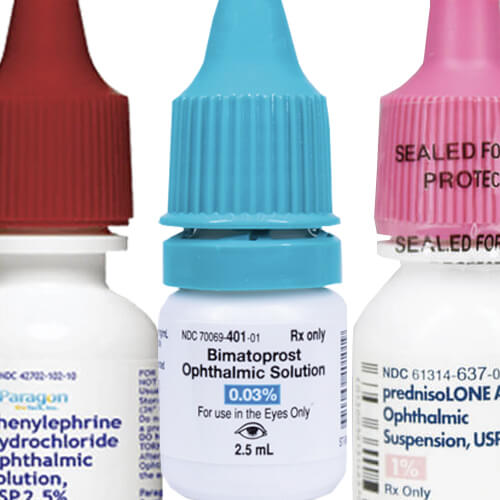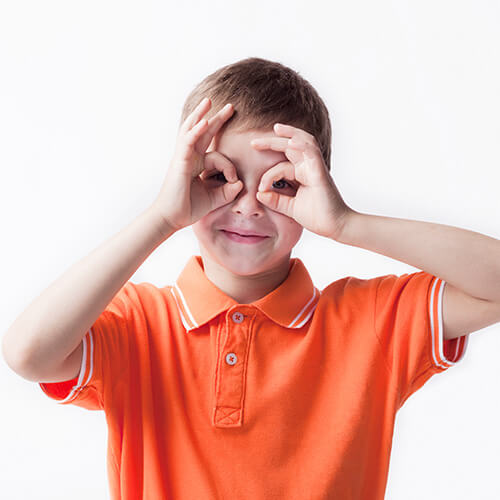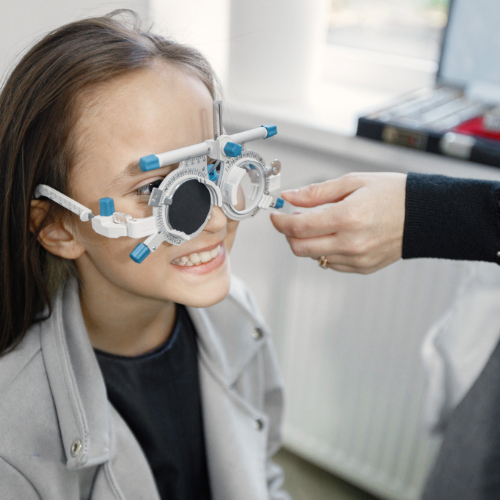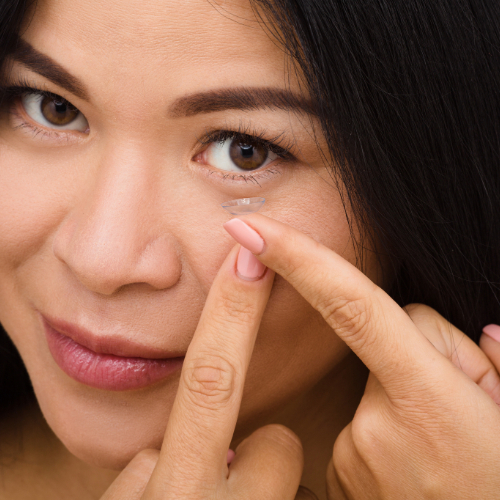Introduction to Mydriatics and Cycloplegics as Ophthalmic Pharmaceutical Drops
Mydriatics and cycloplegics are ophthalmic pharmaceutical drops commonly used during eye exams to evaluate the health of a patient’s eyes. Mydriatics are drugs that cause pupil dilation. Cycloplegics, while also causing a degree of pupil dilation, paralyze the ciliary muscle as well. When paralyzed, the ciliary body prevents the eye from focusing on near or intermediate objects. As a result, one can measure the true refractive error—when the shape of the eye does not bend light correctly, causing blurry images, double vision, headaches, and eye strain.



The 4 Most Common Refractive Errors:
- Myopia (nearsightedness or shortsightedness): causes distant objects to appear blurry or out of focus; the most common refractive error.
- Hyperopia (farsightedness): causes near objects or images to appear blurry.
- Presbyopia: the loss of the ability to focus on near objects, usually beginning around age 40; considered a normal stage of the aging process.
- Astigmatism: causes distorted vision, usually at all distances, and most frequently occurs together with myopia (nearsightedness) or hyperopia (farsightedness).
Common Mydriatics and Cycloplegics Drops:
- Tropicamide (used for standard dilations)
- Cyclopentolate (used for cycloplegic refraction)
- Atropine (used to treat amblyopia and esotropia)
- Phenylephrine (used to treat angle-closure glaucoma)
Is a Dilated Eye Exam Necessary?
When not dilated, the pupil limits the view to the back of the eye. Although one can still view the optic nerve and macula when the pupil is small, it does not allow for the degree of visibility necessary for a thorough, comprehensive eye exam. To see the entire retina, the pupil must be dilated. This is achieved by placing mydriatic and cycloplegic drops in the eyes. Doing so enlarges the pupil and allows for a better, more accurate view of the back of the eye to diagnose any problems that may be present or developing.
Viewing the Dilated Eyes
A slit lamp is used to view the back of the eye. This microscope with a bright light provides a closer look at the different structures at the front, inside, and back of the eye. It is a key tool for determining the health of the eyes and detecting eye disease.
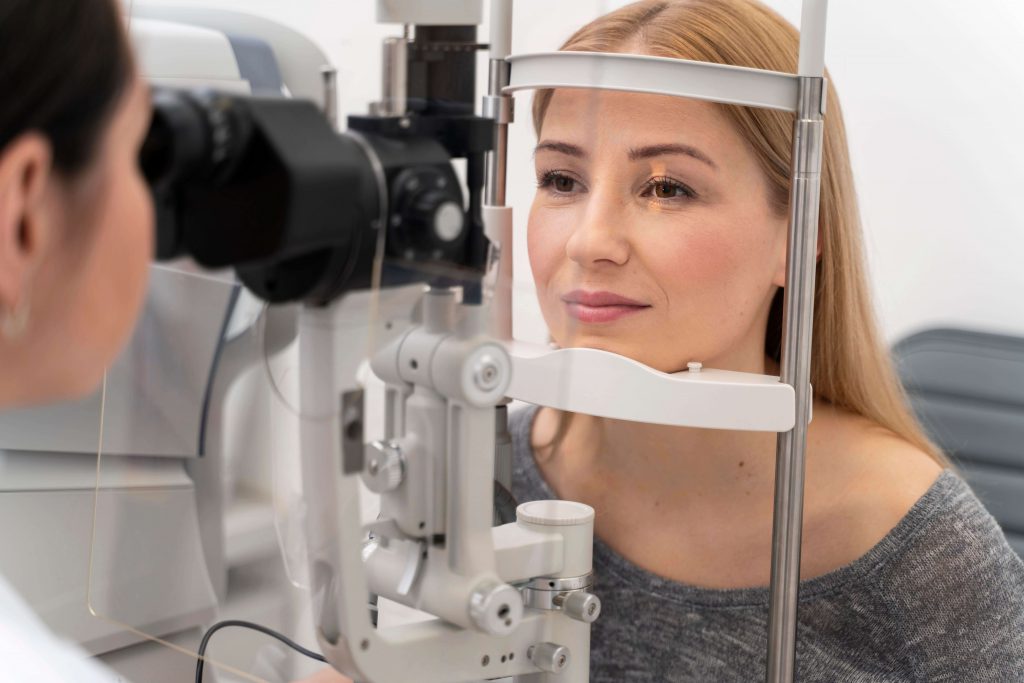
Eye and Medical Conditions Detected with Dilation:
- Retinal Detachment: An emergency situation in which a thin layer of tissue (the retina) at the back of the eye pulls away from its normal position.
- High Blood Pressure: Also known as hypertension, this condition affects the body’s arteries. The force of the blood pushing against the artery walls is consistently too high, causing the heart to work harder.
- Diabetic Retinopathy: A complication of diabetes caused by damage to the blood vessels of the retina.
- Macular Degeneration: Occurs when the macula is damaged, leading to a loss of central vision.
- Glaucoma: A buildup of fluid in the eye that increases pressure and damages the optic nerve.
Instructing Patients After Eye Dilation
These drugs are considered safe when used properly under medical supervision. However, patients should be aware of potential side effects, such as blurred vision or difficulty focusing on close objects.
It is always best to err on the side of caution. A dilated patient should wait at least two hours before driving and ideally have someone else drive them home. Dilation drops can blur vision and cause sensitivity to light, which can be hazardous when driving in bright conditions or at night.
Dilated patients should be given post-mydriatic glasses upon completion of the exam and instructed to wear them during the drive home and any time spent outside. Several inexpensive, effective post-mydriatic protection options are available for patients of all ages. However, it is important to note that the post-mydriatic protection blocks up to 99% of UVB rays and 95% of UVA rays.
Post-Dilation Protection Options:
- Children’s Post-Mydriatic Spectacles
- Adjustable temples
- Primary color temples
- Size: 43mm x 110mm
- Adult Post-Mydriatic Spectacles
- Adjustable temples
- 99-100% UV Protection
- Size: 48mm x 132mm
- Made in the USA
- Slip-In Post-Mydriatic Spectacles
- Slips behind most frames
- Lenses block 99% of UVB and 95% of UVA rays
- Meets government impact resistance requirements
- Made in the USA
- Solar-Rolz® – Roll-Up Sunglasses
- Up to 99-100% UVA/UVB protection
- Rolled design provides a perfect fit for both adults and children
- No adjustment necessary
- Made in the USA
View all post-dilation protection products for sale from Amcon Labs.
